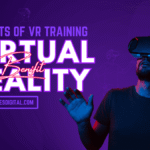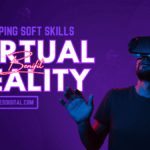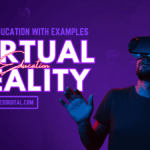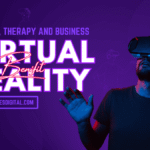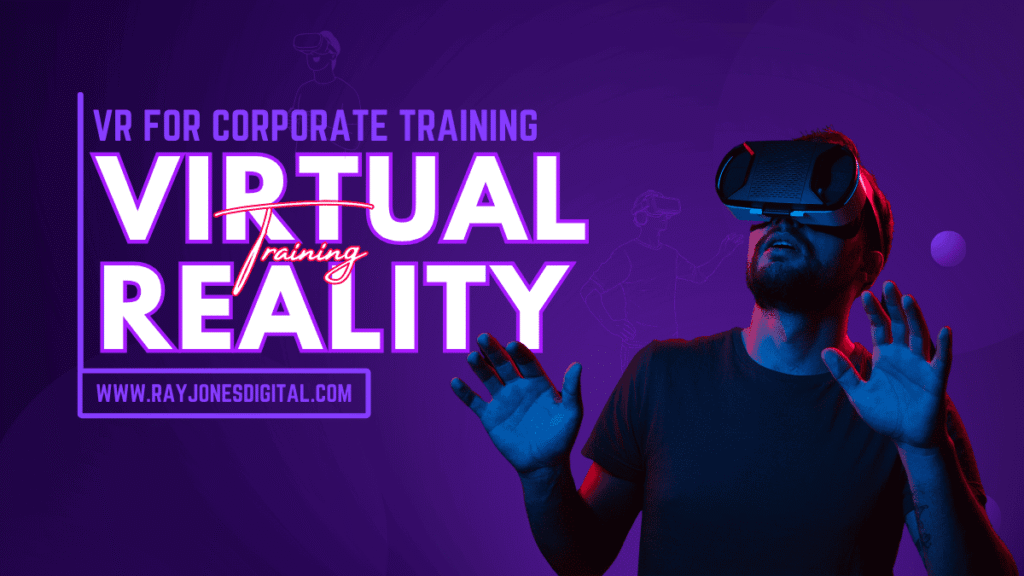
Corporate training has evolved far beyond dusty conference rooms and PowerPoint presentations. Virtual reality is revolutionising how organisations develop their workforce, offering immersive experiences that traditional methods simply can’t match. From surgical simulations to customer service scenarios, VR for Corporate training is proving more effective, engaging, and cost-efficient than conventional approaches.
Companies across industries are discovering that VR training reduces costs by up to 40% whilst improving knowledge retention by 75%. This technology creates safe environments where employees can practice complex procedures, develop soft skills, and build confidence without real-world consequences. The results speak for themselves: faster learning, better retention, and improved performance outcomes.
This comprehensive guide explores seven powerful examples of VR corporate training applications currently transforming workplaces worldwide. You’ll discover how leading companies are using virtual reality to enhance employee development, the specific benefits they’re achieving, and practical insights for implementing VR training in your organisation.
Why VR Training Works Better Than Traditional Methods
Virtual reality training succeeds because it engages multiple senses simultaneously, creating what learning specialists call “embodied cognition.” When employees practice tasks in VR environments, their brains process these experiences as real situations, forming stronger neural pathways than passive learning methods.
Research from Stanford University demonstrates that VR training participants show 40% better retention rates compared to traditional classroom instruction. The immersive nature of virtual environments forces active participation, making it nearly impossible for learners to disengage or multitask during training sessions.
The technology also addresses common training challenges like scheduling conflicts, geographical limitations, and inconsistent delivery quality. VR training modules can be accessed anytime, anywhere, providing consistent experiences regardless of location or instructor availability.
Most importantly, VR enables risk-free practice of dangerous or expensive procedures. Employees can make mistakes, experiment with different approaches, and repeat challenging scenarios without safety concerns or material costs. This psychological safety accelerates learning and builds genuine confidence.
VR Speech Training: Conquering Public Speaking Fears
Public speaking anxiety affects up to 75% of the population, making it one of the most common workplace challenges. Traditional presentation training often falls short because it can’t replicate the realistic pressure of addressing live audiences. VR speech training changes this by creating immersive environments where speakers can build confidence without real-world consequences.
Modern VR platforms simulate incredibly realistic audience experiences, complete with varied reactions, challenging questions, and different venue types. The University of Barcelona found that VR exposure therapy reduces public speaking anxiety by up to 80% after just four sessions, with participants showing significant improvements in confidence, vocal quality, and body language.
Companies like Walmart and Verizon use VR speech training to prepare employees for presentations, sales meetings, and customer interactions. The technology allows speakers to practice with different audience sizes, demographics, and behaviour patterns, providing targeted preparation for specific speaking situations.
The system analyses vocal delivery, body language, and eye contact patterns during presentations, offering real-time feedback that helps speakers identify improvement areas. This data-driven approach accelerates skill development and provides measurable progress tracking.
Advanced VR speech platforms integrate artificial intelligence to create interactive scenarios where virtual audience members ask questions, raise objections, or request clarification. This interactivity helps develop crucial skills like handling difficult questions and maintaining composure under pressure.
Medical Training: Practicing Life-Saving Procedures Safely
Healthcare organisations are pioneering VR training applications, using virtual reality to teach complex medical procedures without patient risk. Surgeons can practice operations hundreds of times in VR before performing them on real patients, significantly improving outcomes and reducing medical errors.
Johns Hopkins Hospital uses VR to train surgeons in spinal procedures, allowing them to practice on virtual patients with different anatomical variations. The technology provides haptic feedback that simulates the feel of cutting through tissue, suturing wounds, and manipulating surgical instruments with remarkable accuracy.
Medical device company Stryker developed VR training modules for orthopaedic procedures, enabling surgeons to familiarise themselves with new implants and techniques before operating. This preparation reduces surgery time by an average of 20% and improves patient outcomes significantly.
Emergency medical training benefits enormously from VR simulations. Paramedics can practice responding to various crisis scenarios, from cardiac arrests to trauma situations, without needing actors or expensive simulation equipment. The technology creates realistic stress conditions that help medical professionals develop crucial decision-making skills under pressure.
Nursing education programmes use VR to teach patient care procedures, medication administration, and bedside manner. Students can interact with virtual patients exhibiting different symptoms, learning to recognise signs and respond appropriately before working with real patients.
Manufacturing and Industrial Safety Training
Manufacturing companies face significant safety challenges, with workplace accidents costing billions annually. VR training provides immersive safety education that’s more effective than traditional methods, allowing workers to experience dangerous situations without actual risk.
Ford Motor Company uses VR to train assembly line workers on proper lifting techniques, equipment operation, and emergency procedures. The virtual environment lets workers experience the consequences of unsafe behaviour, creating lasting impressions that improve safety compliance.
Oil and gas companies like BP and Shell use VR to train workers on offshore drilling procedures, emergency evacuations, and equipment maintenance. The technology replicates hazardous environments where mistakes could be catastrophic, allowing thorough preparation without exposing workers to actual dangers.
Construction companies use VR to teach workers about fall protection, electrical safety, and heavy machinery operation. The immersive training helps workers understand safety protocols viscerally, leading to better compliance and fewer accidents on actual job sites.
Boeing employs VR training for aircraft manufacturing processes, teaching workers complex assembly procedures and quality control measures. The technology reduces training time by 40% whilst improving retention and reducing errors during actual production.
Customer Service Excellence Through VR Scenarios
Customer service training traditionally relies on role-playing exercises that can feel artificial and uninspiring. VR transforms this by creating realistic customer interaction scenarios where employees can practice handling difficult situations, cultural differences, and various personality types.
Walmart trains over one million associates annually using VR scenarios that simulate Black Friday crowds, customer complaints, and emergency situations. The immersive training helps employees develop confidence and problem-solving skills they can apply immediately in real customer interactions.
Airlines use VR to train flight attendants on emergency procedures, difficult passenger situations, and cultural sensitivity. The technology creates realistic cabin environments where staff can practice de-escalation techniques and emergency responses without actual flight risks.
Telecommunications companies train customer service representatives using VR scenarios that simulate technical support calls, billing disputes, and product demonstrations. The virtual environment allows representatives to practice with different customer personality types and technical issues.
Retail chains use VR to train staff on product knowledge, sales techniques, and inventory management. Virtual stores allow employees to practice customer interactions, learn product locations, and understand seasonal merchandising strategies before working on actual sales floors.
Leadership Development in Virtual Environments
Leadership skills are notoriously difficult to teach through traditional methods. VR provides immersive environments where emerging leaders can practice difficult conversations, team management, and decision-making scenarios without real-world consequences.
Companies like PwC use VR to train managers on giving feedback, conducting performance reviews, and handling workplace conflicts. The virtual environment allows leaders to practice sensitive conversations with AI-powered virtual employees who respond realistically to different management approaches.
Diversity and inclusion training benefits significantly from VR’s immersive capabilities. Participants can experience workplace situations from different perspectives, literally seeing through the eyes of colleagues from various backgrounds. This visceral understanding promotes empathy and inclusive behaviour more effectively than traditional diversity training.
Crisis management training uses VR to simulate emergency situations where leaders must make quick decisions under pressure. Virtual scenarios can include natural disasters, security breaches, or public relations crises, allowing leaders to practice response strategies without real-world consequences.
International companies use VR to train leaders on cultural differences and global business practices. Virtual environments can simulate meetings with international partners, helping leaders understand cultural nuances and communication styles essential for global success.
Technical Skills Training and Equipment Operation
Complex technical training often requires expensive equipment and controlled environments. VR eliminates these barriers by creating virtual laboratories, workshops, and training facilities where employees can practice technical skills repeatedly without material costs.
Automotive companies train technicians on engine repair, diagnostic procedures, and new vehicle technologies using VR simulations. The virtual environment allows technicians to disassemble and reassemble components, understand complex systems, and practice troubleshooting without expensive equipment or parts.
Aerospace companies use VR to train engineers on aircraft systems, maintenance procedures, and quality control processes. The technology provides detailed 3D models of aircraft components, allowing engineers to understand complex systems and practice maintenance procedures before working on actual aircraft.
Energy companies train operators on power plant procedures, grid management, and emergency responses using VR simulations. The virtual environment replicates control room environments where operators can practice normal operations and emergency procedures without affecting actual power systems.
Technology companies use VR to train software developers on new programming languages, debugging techniques, and system architecture. Virtual development environments allow programmers to experiment with code, understand system interactions, and practice problem-solving without affecting production systems.
Compliance and Regulatory Training
Regulatory compliance training is often viewed as boring and forgettable, leading to poor retention and potential violations. VR transforms compliance training by creating engaging scenarios where employees experience the consequences of regulatory breaches and practice proper procedures.
Financial services companies use VR to train employees on anti-money laundering procedures, fraud detection, and customer due diligence. Virtual scenarios simulate suspicious transactions and customer interactions, helping employees recognise warning signs and respond appropriately.
Pharmaceutical companies train staff on FDA regulations, drug manufacturing procedures, and quality control processes using VR simulations. The technology creates virtual manufacturing environments where employees can practice compliance procedures and understand the importance of regulatory adherence.
Food service companies use VR to train employees on food safety procedures, hygiene protocols, and hazard identification. Virtual kitchen environments allow staff to practice proper food handling, cleaning procedures, and emergency responses without contamination risks.
Environmental compliance training uses VR to simulate waste management procedures, pollution prevention, and emergency response protocols. Virtual environments help employees understand environmental regulations and practice proper procedures for hazardous material handling.
Measuring VR Training Success and ROI
Successful VR training implementation requires careful measurement and analysis. Companies must track metrics beyond simple completion rates to understand true training effectiveness and return on investment.
Key performance indicators include knowledge retention rates, skill application in real-world situations, safety incident reduction, and employee engagement scores. VR platforms provide detailed analytics on learning progress, time spent in modules, and performance improvements over time.
Cost-benefit analysis should compare VR training expenses against traditional training costs, including instructor fees, facility rental, travel expenses, and lost productivity. Most companies find that VR training pays for itself within 12-18 months through reduced training costs and improved performance outcomes.
Long-term success metrics include employee retention rates, promotion rates among VR-trained staff, and overall organisational performance improvements. Companies consistently report that VR-trained employees show greater confidence, better skill retention, and improved job satisfaction.

I am Ray Jones Digital
My current occupations: a Digital Marketer, Local SEO expert, Link Builder, and WordPress SEO specialist. Shopify SEO, Ecommerce Store Management, and HTML & WordPress Developer I have been practicing the above mentioned services for more than 10 years now As an SEO expert working with your ongoing projects.
